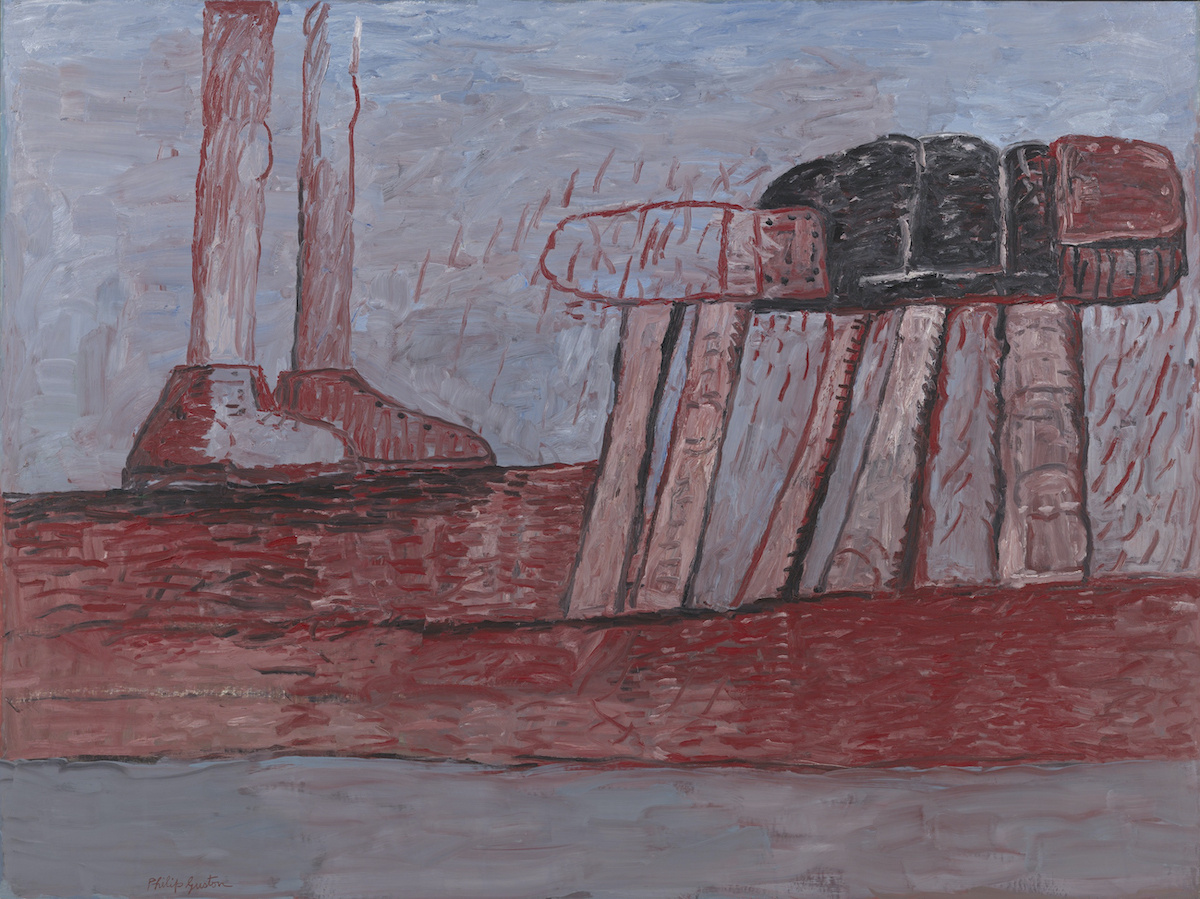Philip Guston Blockbuster Pushed Back to 2024 Amid Concerns Over KKK Imagery
One of the most hotly anticipated blockbuster exhibitions on the art world’s horizon has been pushed back after organizers raised concerns over images evoking racist violence in certain works. After its original planned summer opening was delayed until 2021 because of the pandemic, a high-profile Philip Guston retrospective organized by the National Gallery of Art in Washington, D.C., Tate Modern in London, the Museum of Fine Arts Boston, and the Museum of Fine Arts Houston has now been put on hold for four years—with a new plan to launch in 2024.
On Monday, the National Gallery quietly posted a joint statement signed by directors of all four museums set to host the show: Kaywin Feldman (National Gallery), Frances Morris (Tate Modern), Matthew Teitelbaum (MFA Boston), and Gary Tinterow (MFA Houston). The statement said the exhibition was being pushed “until a time at which we think that the powerful message of social and racial justice that is at the center of Philip Guston’s work can be more clearly interpreted.”
It continues: “We recognize that the world we live in is very different from the one in which we first began to collaborate on this project five years ago. The racial justice movement that started in the U.S. and radiated to countries around the world, in addition to challenges of a global health crisis, have led us to pause.”
Though the statement did not specify what aspects of the show proved unsuited to the moment, a representative for the National Gallery told ARTnews that organizers raised concerns over “painful” imagery including the recurring Ku Klux Klan characters that appear in Guston’s late-period works. Twenty-five such drawings and paintings featuring KKK imagery were to be included in one or more iterations of the show.
“There is a risk that they may be misinterpreted and the resulting response overshadow the totality of his work and legacy, especially since it is known that Guston was an ardent supporter of racial equality and opponent of discrimination,” the National Gallery representative said. Logistical challenges and the cost of shipping works during the pandemic also figured in the plan to delay the show, the rep added.
Among the works that had initially been expected to appear in the show was Drawing for Conspirators (1930), which is held in the collection of the Whitney Museum. That drawing features an image of a Christ-like lynched figure arranged as if in a lamentation scene, with a group of hood-wearing figures removing the dead body from a tree. Before them, a lone hooded figure holds a broken rope draped over rocks that are shaped like Louisiana and Mississippi.
Guston was known to be involved with left-wing causes, and he viewed his work as being critical of racism, anti-Semitism, xenophobia, and U.S.-led war efforts. The KKK was a frequent subject in his work—for one series, he painted hooded members as what he described as “self-portraits,” in an attempt to understand the nature of evil. “I almost tried to imagine that I was living with the Klan,” he once said.
The four museum directors wrote in their statement, “We feel it is necessary to reframe our programming and, in this case, step back, and bring in additional perspectives and voices to shape how we present Guston’s work to our public. That process will take time.” A representative for the MFA Houston declined to comment further. Representatives for Tate Modern and the MFA Boston did not immediately respond to requests for comment.
In a statement sent to ARTnews, Musa Mayer, the artist’s daughter and a scholar who has written extensively on Guston, took issue with the decision and said she was “saddened” by the show’s delay. “Half a century ago, my father made a body of work that shocked the art world,” she said. “Not only had he violated the canon of what a noted abstract artist should be painting at a time of particularly doctrinaire art criticism, but he dared to hold up a mirror to white America, exposing the banality of evil and the systemic racism we are still struggling to confront today.”
Citing Guston’s Jewish ancestry and his family’s history of having fled Ukraine at a time when their people were under attack, she said Guston’s work resonates with contemporary concerns. “This should be a time of reckoning, of dialogue. These paintings meet the moment we are in today. The danger is not in looking at Philip Guston’s work, but in looking away.”
Published at Thu, 24 Sep 2020 22:00:06 +0000


